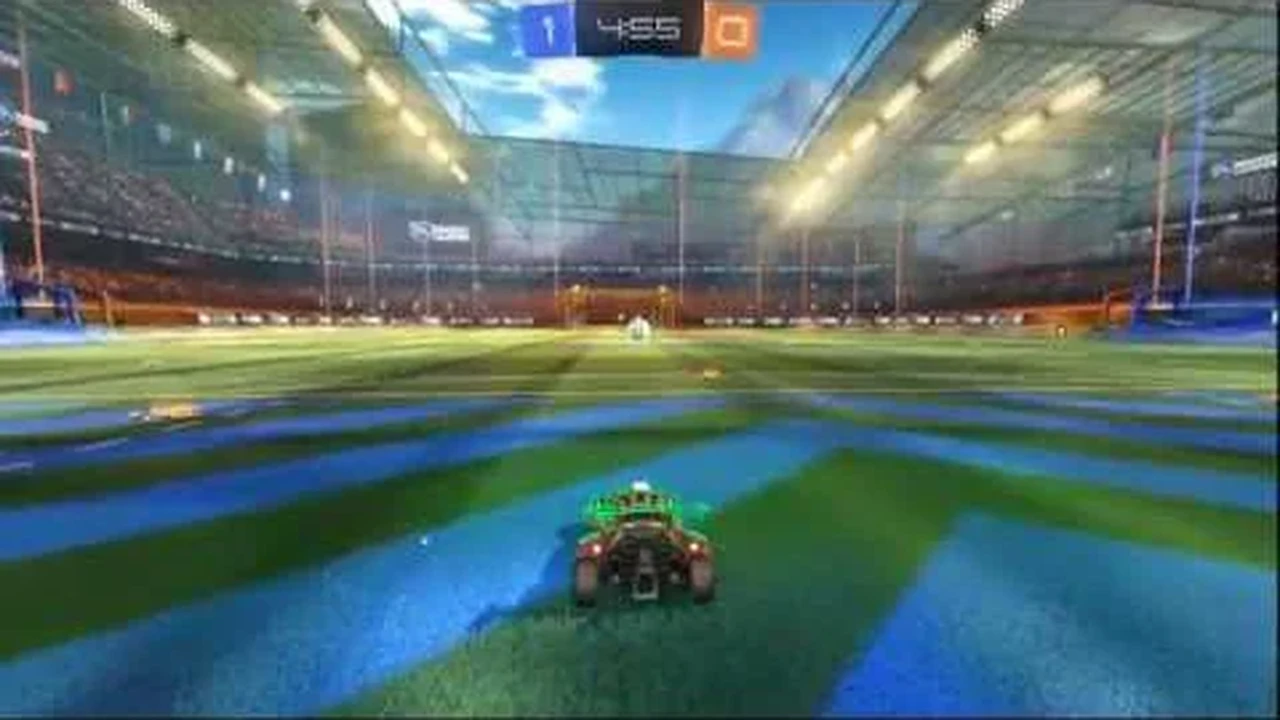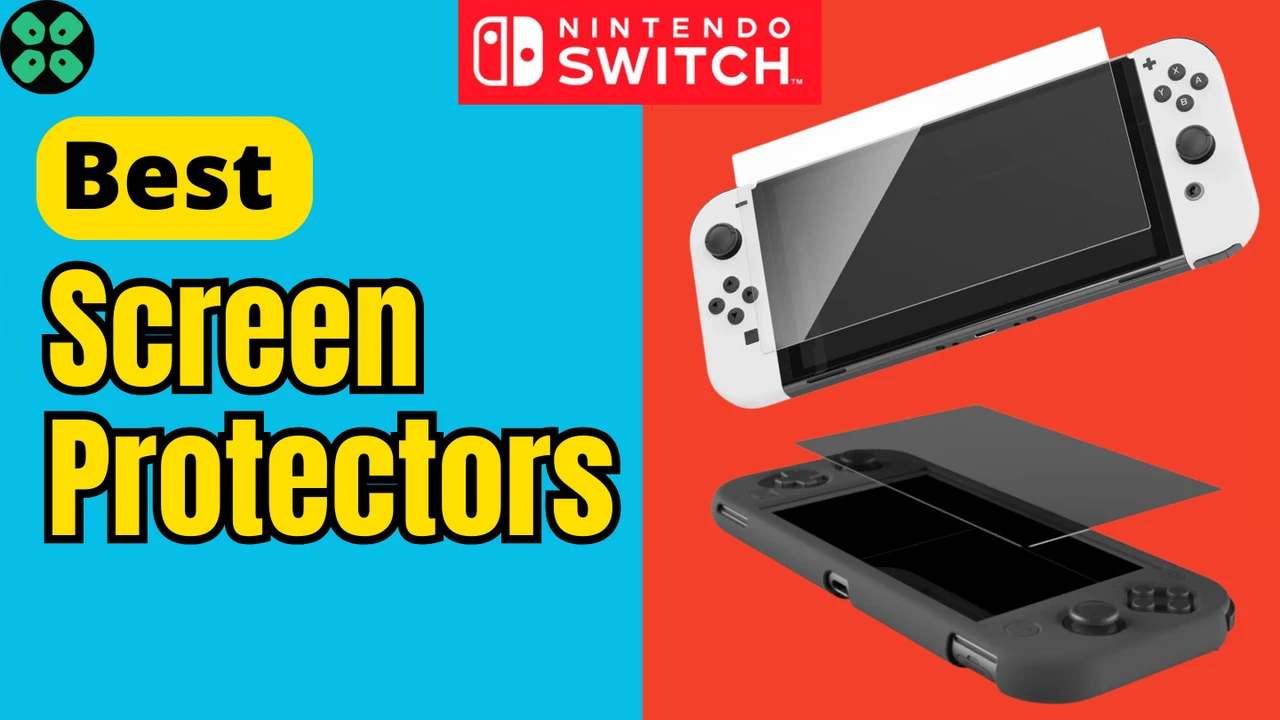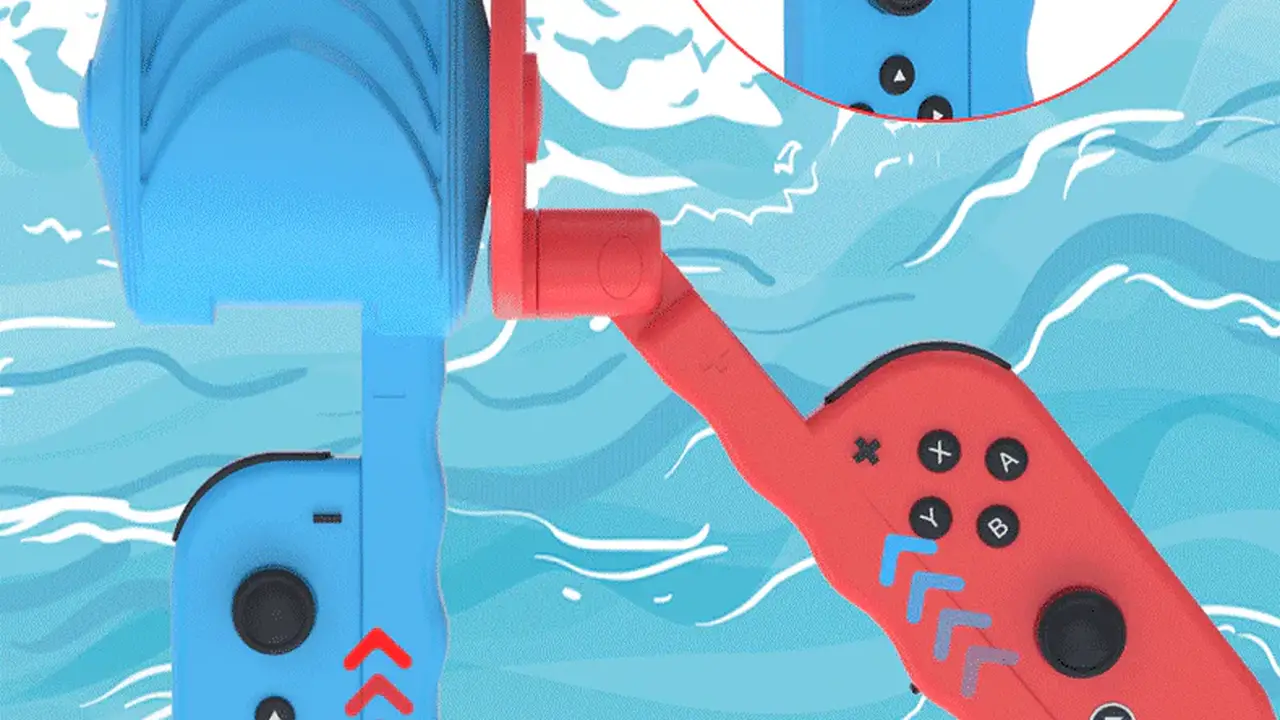Nintendo Switch 2 Troubleshooting Common Issues
Learn how to set up and manage parental controls on your Nintendo Switch 2 console.

Nintendo Switch 2 Parental Controls Setup
Hey there, fellow parents and guardians! Getting a new Nintendo Switch 2 for your family is super exciting, but let's be real, you also want to make sure your kids are playing safely and responsibly. That's where parental controls come in handy. Think of them as your digital superhero cape, giving you the power to manage what your kids play, who they interact with, and how much screen time they get. This guide is going to walk you through everything you need to know about setting up and managing parental controls on your shiny new Nintendo Switch 2. We'll cover the basics, dive into some advanced settings, and even recommend some specific products and scenarios to help you out. Let's get started!
Why Parental Controls Matter on Nintendo Switch 2
You might be thinking, "Do I really need all these controls?" And the answer is a resounding YES! In today's digital world, kids are exposed to so much, and while gaming is awesome, it's also important to set boundaries. Parental controls on the Nintendo Switch 2 aren't about being a buzzkill; they're about creating a balanced and safe environment. They help you:
- Manage Playtime: Ever had trouble getting your kids off the console? Parental controls can set daily play limits.
- Restrict Content: Not all games are suitable for all ages. You can block games based on their age rating.
- Control Online Interactions: The internet can be a wild place. You can limit who your kids can communicate with online.
- Prevent Unwanted Purchases: Kids can accidentally (or intentionally!) rack up big bills on digital storefronts. You can require a password for purchases.
- Promote Healthy Habits: By setting limits, you're teaching your kids about moderation and balance.
Initial Setup of Nintendo Switch 2 Parental Controls
Setting up parental controls on your Nintendo Switch 2 is pretty straightforward. Nintendo has made it super user-friendly, especially if you use the dedicated smartphone app. Let's break it down:
Using the Nintendo Switch Parental Controls App for Easy Management
This is by far the easiest and most recommended way to manage parental controls. You'll need a smartphone (iOS or Android) and a Nintendo Account.
- Download the App: Search for "Nintendo Switch Parental Controls" in your device's app store and download it. It's free!
- Log In with Your Nintendo Account: Open the app and sign in with your Nintendo Account. If you don't have one, you'll need to create one. This account will be linked to your Switch 2.
- Link Your Switch 2: The app will guide you through linking your Nintendo Switch 2. This usually involves scanning a QR code displayed on your Switch 2's screen or entering a registration code. Make sure your Switch 2 is connected to the internet.
- Set Up Restrictions: Once linked, you can start setting up restrictions directly from your phone. This includes:
- Play Time Limits: Set daily play limits for the console. You can even set a 'bedtime' alarm that stops play at a certain hour.
- Suspension Software: This allows you to suspend software at a certain time, even if the play time limit hasn't been reached.
- Restriction Level: Choose from preset restriction levels (e.g., Teen, Child, Young Child) or customize your own.
- Software Rating: Restrict games based on their age rating (ESRB, PEGI, CERO, etc.).
- Communication with Others: Limit online interactions, including sharing screenshots/videos on social media.
- Posting to Social Media: Prevent sharing content directly from the console to social media platforms.
- Free Communication: Restrict in-game communication features.
- VR Mode Restriction: If the Switch 2 has VR capabilities, you can restrict access to VR mode.
- Monitor Play Activity: The app also lets you see what games your kids have been playing and for how long. It's a great way to stay informed without constantly hovering.
Setting Up Parental Controls Directly on the Nintendo Switch 2 Console
While the app is super convenient, you can also set up basic parental controls directly on the console itself. This is useful if you don't have a smartphone or prefer to manage things directly.
- Go to System Settings: From the HOME Menu, select 'System Settings'.
- Scroll Down to Parental Controls: On the left-hand menu, scroll down and select 'Parental Controls'.
- Set Up Parental Controls: Select 'Set Up Parental Controls'.
- Enter a PIN: You'll be prompted to create a 4-digit PIN. This PIN is crucial, as it will be required to change any parental control settings or override restrictions. Make sure it's something you'll remember but your kids won't guess!
- Choose Restriction Level: Similar to the app, you can choose from preset restriction levels or customize them.
- Confirm Settings: Review your settings and confirm.
Advanced Parental Control Customization and Scenarios
Now that you've got the basics down, let's talk about some more advanced scenarios and how you can fine-tune your settings to fit your family's unique needs.
Managing Playtime Effectively: Beyond Simple Limits
Setting a daily time limit is a good start, but you can get more granular. For example:
- Bedtime Alarms: Use the 'bedtime' feature in the app to automatically suspend gameplay at a specific time, even if the daily limit hasn't been reached. This is great for school nights.
- Bonus Playtime: The app allows you to grant 'bonus playtime' for good behavior or special occasions. This is a fantastic way to reward your kids without completely overriding your rules.
- Software Suspension: You can manually suspend software from the app at any time. This is useful if you need to get your child's attention immediately.
Content Filtering: Understanding Age Ratings and Specific Game Blocking
Age ratings are your best friend here. The Nintendo Switch 2 supports various rating systems like ESRB (North America), PEGI (Europe), and CERO (Japan). Make sure you understand the ratings relevant to your region.
- ESRB Ratings Explained:
- EC (Early Childhood): Ages 3+
- E (Everyone): Ages 6+
- E10+ (Everyone 10+): Ages 10+
- T (Teen): Ages 13+
- M (Mature): Ages 17+
- AO (Adults Only): Ages 18+ (Rare for Nintendo)
- PEGI Ratings Explained:
- PEGI 3: Suitable for all age groups.
- PEGI 7: Suitable for ages 7 and over.
- PEGI 12: Suitable for ages 12 and over.
- PEGI 16: Suitable for ages 16 and over.
- PEGI 18: Suitable for adults only.
- Customizing Restrictions: Instead of just picking a preset, you can manually allow or block specific games, even if they fall within the allowed age rating. This is useful if you have a particular game you don't want your child playing, regardless of its rating.
Controlling Online Interactions and Purchases on Nintendo Switch 2
Online safety is paramount. The Switch 2 offers robust options:
- Communication with Others: You can restrict free communication in games, which means kids can't send or receive messages from strangers. This is highly recommended for younger children.
- Social Media Posting: Prevent your child from posting screenshots or videos directly to social media platforms from the console. This helps protect their privacy and prevents accidental sharing.
- eShop Purchase Restrictions: This is a big one! Always set a password requirement for purchases on the Nintendo eShop. This prevents accidental or unauthorized game and DLC purchases. You can also set a spending limit if you wish.
Recommended Products and Tools for Enhanced Parental Control
While the built-in Nintendo Switch 2 parental controls are excellent, sometimes you might want to go a step further, especially for overall home network management. Here are a few product categories and specific examples that can complement your Switch 2 settings:
Smart Routers with Advanced Parental Controls
These routers offer network-wide content filtering, time limits, and activity monitoring, which can apply to all devices connected to your home Wi-Fi, not just the Switch 2.
- Netgear Nighthawk Routers (e.g., Netgear Nighthawk AX8):
- Features: Many Nighthawk routers come with Netgear Armor powered by Bitdefender, offering comprehensive cybersecurity and parental controls. You can set profiles for each family member, filter content, pause internet access, and view usage reports.
- Use Case: Ideal for families with multiple devices (phones, tablets, other consoles) where you want consistent internet rules across the board.
- Comparison: More robust than basic router controls, offering a centralized dashboard for all devices.
- Estimated Price: Routers range from $150 - $400+, with optional subscription fees for advanced parental control features (e.g., Netgear Armor is typically $69.99/year after a trial).
- TP-Link Archer Series Routers (e.g., TP-Link Archer AX55):
- Features: TP-Link's HomeShield (powered by Avira) offers similar features to Netgear Armor, including robust parental controls, QoS (Quality of Service) for prioritizing gaming traffic, and network security.
- Use Case: A great mid-range option for families looking for strong parental controls without breaking the bank.
- Comparison: Often more budget-friendly than Netgear, but still provides excellent features.
- Estimated Price: Routers range from $80 - $250+, with HomeShield Pro subscription typically around $5.99/month or $54.99/year.
Dedicated Parental Control Software/Services
These are software solutions that you install on various devices or manage through a web portal, offering very granular control.
- Bark Parental Control:
- Features: Bark monitors texts, emails, YouTube, and over 30 social media platforms for potential issues like cyberbullying, predatory behavior, and self-harm ideation. While it doesn't directly control the Switch 2, it provides a broader safety net for online interactions. It also offers screen time management and website filtering.
- Use Case: Best for families concerned about their children's overall online safety and digital well-being across multiple devices, not just gaming.
- Comparison: Focuses more on content monitoring and alerts rather than strict time limits on specific consoles.
- Estimated Price: Plans typically start around $14/month or $99/year.
- Circle Home Plus:
- Features: This is a physical device that plugs into your router and allows you to manage every device on your home network. You can set time limits, filter content, pause the internet, and track usage across all connected devices, including the Switch 2.
- Use Case: Excellent for families who want a centralized, hardware-based solution for managing internet access and screen time for all devices.
- Comparison: Offers a more comprehensive network-wide control than just the Switch 2 app, but requires an upfront hardware purchase.
- Estimated Price: Circle Home Plus device is around $129, with a subscription service typically $9.99/month or $89.99/year.
Gaming Headsets with Built-in Volume Limiters
While not strictly a parental control, these can help protect your child's hearing during long gaming sessions.
- Puro Sound Labs BT2200s Kids Headphones:
- Features: These headphones are specifically designed for kids with an 85 dB volume limit to prevent hearing damage. They are wireless and comfortable.
- Use Case: Great for younger kids who might crank up the volume too high.
- Comparison: Unlike regular gaming headsets, their primary focus is hearing protection.
- Estimated Price: Around $79.99.
- JBL JR310BT Kids Wireless On-Ear Headphones:
- Features: Another popular option with a safe volume limit (85 dB) and a comfortable, durable design for kids.
- Use Case: Similar to Puro, ideal for ensuring safe listening levels during gaming.
- Comparison: Often more affordable than Puro, but still offers reliable volume limiting.
- Estimated Price: Around $49.95.
Troubleshooting Common Parental Control Issues on Nintendo Switch 2
Even with the best setup, you might run into a few snags. Here are some common issues and how to tackle them:
PIN Issues and Forgotten Passwords
Forgetting your PIN is probably the most common issue. Don't panic!
- Resetting Your PIN: If you forget your PIN, you can reset it through the Nintendo Switch Parental Controls app. If you're not using the app, you'll need to visit the Nintendo support website and follow the steps to request a master key, which will be sent to the email address associated with your Nintendo Account.
- Kids Guessing the PIN: Make sure your PIN isn't something obvious like their birthday or 1234. Consider using a random sequence of numbers.
Restrictions Not Applying Correctly
If your restrictions aren't working as expected, check these things:
- Console Linked Correctly: Double-check that your Nintendo Switch 2 is properly linked to your Parental Controls app. Sometimes, a re-link might be necessary.
- Internet Connection: For the app to communicate with the console and apply settings, both need to be connected to the internet.
- System Updates: Ensure both your Nintendo Switch 2 and the Parental Controls app are updated to their latest versions. Bugs can sometimes be fixed with updates.
- Time Zone Settings: Make sure the time zone on your Switch 2 is correct, especially if you're using time-based restrictions.
Kids Bypassing Controls
Kids are clever, and they might try to find ways around your settings. Here's how to stay one step ahead:
- Don't Share Your PIN: This seems obvious, but it's the easiest way for them to bypass controls.
- Monitor Activity: Regularly check the play activity reports in the Parental Controls app. This will show you what they've been playing and for how long, helping you spot any unusual patterns.
- Educate Your Kids: Talk to your children about why these rules are in place. Explain the importance of balanced screen time and online safety. When they understand the 'why,' they're more likely to cooperate.
- Physical Location: Consider where the Switch 2 is played. If it's in a common area, it's easier to supervise.
Best Practices for Parental Control on Nintendo Switch 2
Setting up the controls is just the first step. Here are some best practices to ensure long-term success:
Open Communication with Your Children
This is probably the most important tip. Don't just impose rules; discuss them. Explain why you're setting limits and what the benefits are. When kids feel involved and understand the reasoning, they're more likely to respect the boundaries.
Regularly Review and Adjust Settings
As your children grow, their needs and the types of games they play will change. What was appropriate for a 7-year-old might not be for a 12-year-old. Periodically review your parental control settings and adjust them as needed. This shows flexibility and trust.
Lead by Example with Screen Time
Kids learn by watching. If you're constantly glued to your phone or tablet, it's harder to enforce screen time limits for them. Model healthy digital habits yourself.
Balance Restrictions with Freedom
While controls are important, don't over-restrict. Allow for some freedom and exploration within safe boundaries. The goal is to teach responsible gaming, not to make gaming a chore.
Stay Informed About New Games and Features
Keep an eye on new game releases and any new features Nintendo might add to the Switch 2. This will help you anticipate potential issues and adjust your controls proactively.
Setting up parental controls on your Nintendo Switch 2 is a powerful way to ensure your kids have a safe, fun, and balanced gaming experience. By using the dedicated app, understanding age ratings, and having open conversations with your family, you can create a digital environment that works for everyone. Remember, it's an ongoing process, so be prepared to adapt and adjust as your children grow and technology evolves. Happy gaming, and stay safe out there!
:max_bytes(150000):strip_icc()/277019-baked-pork-chops-with-cream-of-mushroom-soup-DDMFS-beauty-4x3-BG-7505-5762b731cf30447d9cbbbbbf387beafa.jpg)






